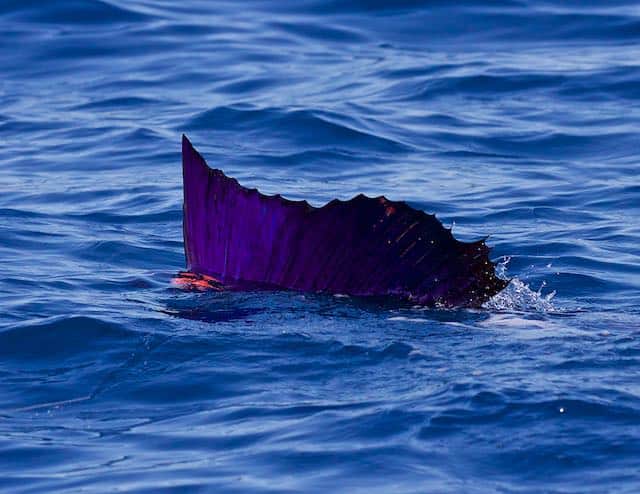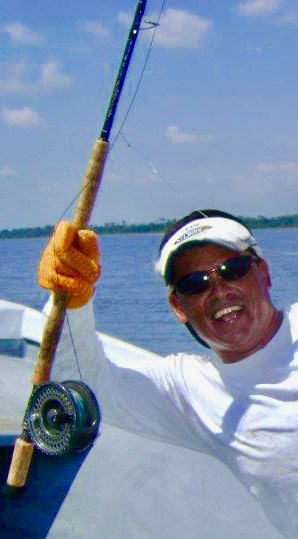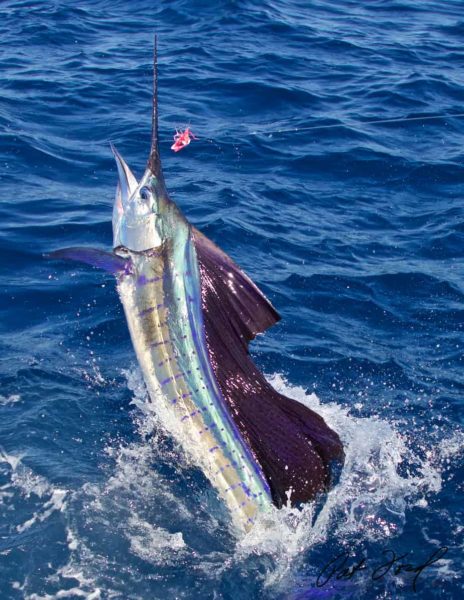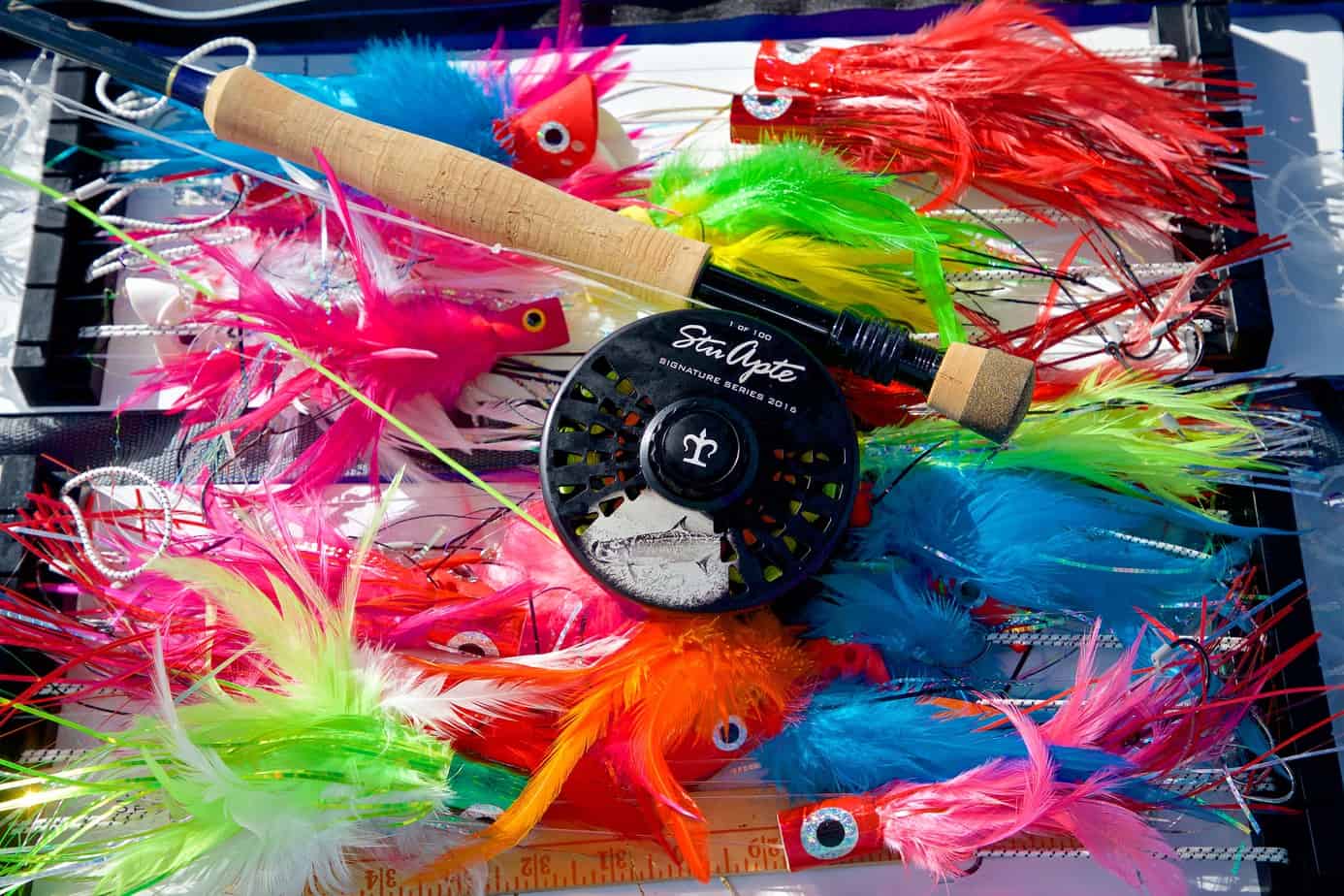The angler stood on the veranda of Marina Pez Vela in Quepos and looked at the vast sport fishing fleet in awe. A Colorado native and avid fly fisherman, he had never been on the ocean before. He was quite adept on his home waters, walking the bank or wading in streams, casting a dry fly to trout.
He had seen fishing shows on television and read many an article about anglers casting to and challenging big pointy nose fishes with a flimsy fly rod on a deep blue ocean. It became a dream of his. Then an obsession. It moved to the top of his bucket list. Finally, the day had come. He walked down the stairs at the marina to the boats and stepped aboard the Big Eye II.
Captain Franklin Araya shook his hand and confirmed the angler’s mission was to catch a sailfish on the fly. “There are plenty of fish out there, but they are muy mañosa,” Araya said, explaining that the fish are lazy and finicky.
El Niño is the culprit — the weather phenomenon that makes every blue water fisherman in the Eastern Tropical Pacific cringe. The water temperature goes up, the fish don’t follow their normal patterns, and they become lethargic.
The Big Eye II idles out of the marina and Araya pushes the throttle forward. The angler from Colorado is paying attention to every detail. They pass green water, then emerald water.
The water turns blue and they pass a large pod of pilot whales. Araya motors forward. Finally, the water turns a deep cobalt blue that boat captains like to see. Sailfish feed mainly by sight. The cleaner the water, the happier the sailfish. Deep blue means nutrient-rich, clean water. Araya throttles down and begins trolling around 6 or 7 knots. For fly fishing, he prefers to pull four teasers, lures without hooks to entice sailfish to the surface.

The sailfish are fooled into thinking it is something they usually prey on, like a bonito, flying fish, or one of several other tasty species.
The theory behind fly fishing sails is quite simple. The sailfish comes up chasing and slashing at the teaser. The mate reels in the teaser with the sailfish chasing behind, and at the last second jerks the teaser from the water.
At the same moment, the captain is putting the boat in neutral and the angle is casting the fly. Only a short cast is necessary. The only option for the charged-up sailfish is the fly that was just presented and a hungry sail will almost always strike it.
It is really a team effort. Floating flys with a popper head works best in Costa Rica. When asked for his top three-color choices Araya replied, “pink, pink and pink!”
Teaching people or taking folks to catch their first sailfish on the fly is a passion for Araya. He says first timers or novices are his best students, because they listen well to instruction. People with saltwater fly experience sometimes seem more set in their ways and don’t always take instruction well. Every ocean is different. What works in Florida might not work so well in Costa Rica, and vice-versa.
They had been trolling nearly three hours and passed at least a half dozen “floaters,” sailfish cruising the surface with either their tail fin or their whole sail above the surface. One or two came into the teasers, took a quick sniff and faded off. The fish were definitely lazy. Araya put out a couple “naked ballyhoo” in the spread of teasers. Natural baits which will give the fish a scent to follow or even a taste, but with no hook in the bait.


Shortly, a sailfish showed up in the spread of teasers that was ready to play. It smacked the left long teaser, then charged into the short, the closest teaser to the boat. It was lit up like Christmas in a purple hue, and Araya knew with this fish it was game on.
Araya dropped the boat into neutral and hollered down to the Colorado angler to cast. In all the excitement, he remembered the captain’s instructions. “Fish it just like you would with your dry fly. When the line comes tight strike him, and hang on.”
He made his cast. It was picture-perfect after that. The sail hit the fly going away, and the line immediately went tight. He struck hard. Line screamed off his reel, and the reel handle slammed into his knuckles hard for a painful initiation of hooking one of the fastest fish in the ocean. He recovered nicely, and 150 yards of line screamed off the reel while the sail did a fast-forward ballet across the surface before it slowed.
The rest was simple angling knowledge. You don’t beat a big fish with strength; you beat it with finesse. It pulls left, you pull right; it pulls right, you pull left. When it runs, you rest. When it stops, you work. He had the fish boat-side in around twenty minutes, an amazing time for a first sail on the fly.
They gently released it. He even managed a second before the day was over, sin busted knuckles. It might be months before someone can wipe the smile off his face.
The last thing he said to Franklin as he left the boat was, “see you next year — I think I am ready to try a marlin!”
Todd Staley ran a fishing sport operation on both coasts of Costa Rica for over 25 years.






